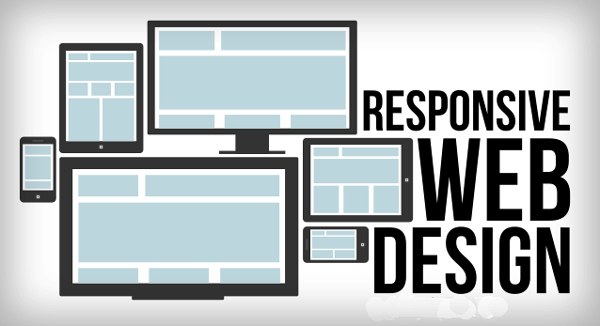For the last few years with the widespread increase in internet access from mobile or handheld devices, responsive web design became the order of the day. Offering a web layout that opens across all types of devices without making any difference in the ease of accessing the site is the prime motto of responsive web design. Google has already been specific that it would rank mobile optimized sites higher than sites with a general approach. In just few years from now browsers on mobile devices are going to outnumber the desktop internet users and naturally it became priority now for the web designers to optimize the design aspects for mobile devices. Here we introduce the most important points to consider when designing a responsive website.

1.Design it ready for all types of screen
The most important thing about responsive web design is how the site is made to look in different device screens. Whether it is opened in a small mobile screen or semi-large tablet PC screen or opened in desktops or laptops, for users the look should be optimized to minimize the difference. Just because opening in a relatively smaller screen size the user should not have a compromising view of the web page layout.
2.Offer navigation and contents readable, simple and bold
Often when a website is opened on mobile screens the fonts lose their readability or the user needs to struggle to find out simple navigation buttons. If all the contents and navigation buttons just do not look prominent for the users to access them easily, you are definitely to lose a lot of mobile browsers and consequent search ranks for mobile users. Make sure that the content fonts, navigation buttons and all the needful areas look proportionally bigger and prominent in all sorts of devices.
3.Optimize design for on-the-move browsing
Obviously you just cannot expect mobile browsers to search the web in a static location as with so called desktops and so your website design should have elements that help them to access your website while they are on the move. Otherwise they would simply leave you for another website. Using bigger buttons, clean visually optimizing fonts, contrasts that let users see clearly and highlighting relevant elements will make a site friendly for on the go browsing.
4.Optimize loading and page speed
Mobile browsers by their on-the-move restless nature have less patience than their desktop or laptop counterparts. Naturally, if you want to seriously rope on the mobile traffic you just cannot make them wait while your webpage takes minutes to load. It has been that 74% of mobile browsers just do not prefer to wait more than 5 seconds for a page to load on the device screen before they move on to another site. Optimize media, image and other heavy contents and use them only sparingly for mobile browsers as they hinder the page speed severely.
5.Give priority to testing
Before launching your mobile friendly website it is too important to test the performance of your website on different devices and screens as to become assured of their loading speed, screen layout, navigation friendliness and overall performance. Through Google Analytics you can easily see the different web browsers that are in use for accessing your website. Whether your website works better for users of all devices and browsers is the key aspect that your testing maneuvers would reveal and accordingly you can take up appropriate measures to breach those gaps.
6.The design must adapt to the browser and device
Adaptive design helps a website to open multiple layout versions as per the device in use. The server detecting the device in use or the operating system sends the appropriate version of the site. Adaptive design makes it quicker for the site to open with an optimized page view and on-page elements.
7.Optimize graphic elements, images and media
Graphic contents like infographics, images and video files require optimization for better performance and speed in mobile devices. Using big sized images, infographics with too many graphic characters may not only hinder page speed but it can even be derogatory for a fluid and superb web experience as a whole. Insist on using media, image and graphic elements that are best displayed across all types of screen sizes and devices.
8.Do not clutter the site with unnecessary elements
Mobile screens however high resolution and fluid display it offers wouldn’t match desktop viewing experience, especially as far as the clean accessibility to the on-page elements is concerned. Naturally, to make the site more mobile user friendly you need to present the web content as prominently as possible with lot of white space around. Making the website free of unnecessary clutter is not just a design aspect but a too relevant performance issue now.
9.Boost performance with the best hosting service
However big and wide you deploy all your resources to make your website a truly responsive one, the performance and speed of your website depends to a great extent on the quality of your hosting service provider. Obviously dedicated hosting servers will enjoy an array of competitive edge over cheap shared hosting servers, but there too you can cut your choice by analyzing the performance of top sites and getting to know the hosting services backing them. Quality of customer support, average down time, performance metrics and the updating process – these are the few aspects to analyze when you look for a great hosting service.
10.Make your design flexible to changes and trends
Web design trends are evolving continuously with new device features and other web dynamics. Many of these changes are too transitory to be taken over by another change shortly. But if your website is not flexible enough to cope up with some of these changes you may miss to rope in the




